Italy Part 2: From Merano to the Dolomites
Beautiful Scenery and famous Peaks (5)
We followed a cycle path along the river Passer from Merano to Bolzano. The road was flat and not demanding and there were many places to fill up fresh water and nice spots on the river to take a break. As soon as we arrived in the bustling provincial capital Bolzano, the South Tyrol suddenly felt more urban to us. Bolzano offers an interesting mixture between Italian Dolce Vita and German Lederhosen & Schnitzel and you equally often hear both languages. The old town is worth a visit, but we missed the most famous attraction – we didn’t pay a visit to Ötzi the Iceman at the Archaeological Museum, we simply didn’t think about it. But we did find a nice Street-Bar with a good variety of drinks in the arcades of the old town. Fortunately, we didn’t stay overnight in Bolzano, otherwise we could have definitely spent too much time at this welcoming little bar.
The Eisack Valley and charming Klausen
We continued our trip through the narrow Eisack Valley that runs from Bolzano to the Brenner Pass. It would have been a scenic ride on this former railway road, but the Eisack Valley is also traversed by three main traffic lines with motorway, state road and the railway line. But at least bridges and tunnels made the cycle track interesting and varied. It was a hot afternoon and we were looking for a place to swim in the river, but there were fences everywhere and we didn’t feel as close to nature as expected.
We reached the pretty village Klausen and found an available spot on the campground on a platform with a view of the castle. There was even a swimming pool and a small supermarket on the campground, what a reward after a long cycling day. A family from Spain camped close to us and they were also traveling by bicycle with their children, a bike trailer and all the luggage. Now THAT is a challenge. We crossed their paths several times the next day and we thought they were so brave and though doing this. It must be such a wonderful adventure for their children, but apart from the usual challenges of long-distance cycling, you would also constantly have to entertain the children and plan your days according to their needs. That would need much more planning, but surely an unforgettable experience for everyone.
Our next stop was Brixen, the oldest city of South Tyrol and with stunning baroque architecture and a large cathedral, one of the most important sacred buildings in the Alpine region. Our first impression was that of a nun repairing a bicycle for a woman on the sidewalk. A stately piazza leads to the medieval center where a market with local specialties (mostly bacon) was going on. It didn’t make sense to buy anything, because we were lacking the refrigerator on our bicycles and it was still around 36° degrees in those days. We sat down in a café on the main piazza and read the latest COVID-19 news and soon realized, that we would have to change our route.
Really, a new route already?
There was a new imposed quarantine for Swiss Citizens traveling to Slovenia with few exceptions. We read through all the details, looked at each other and in front of the cathedral in Brixen we had to change our plans. Many smaller border crossings between Italy and Slovenia remain closed from now on for tourists and therefore, it wasn’t possible anymore to travel to the emerald Soča Valley in Slovenia and to visit the Julian Alps. The only open border crossing is close to Trieste and it was allowed to traverse through Slovenia within 12 hours. We checked our route on the app Komoot and it is only about 36 km of cycling to pass through Slovenia, so that would be easily possible.
We didn’t expect to change our route so soon, but there is no reason to complain. We would get to see Trieste, supposedly a city worth living and another good thing was, that we could still follow the Dolomites Cycle Path as planned for a while. Those changes are a part of our cycling trip and we have to be able to compromise. Even more in 2020. Thankfully, we are usually the same opinion and learned to make that lemonade if life gives you lemons.
Not Twin Peaks, but Three Peaks
We followed the Dolomites Cycle Path on the old railway road from Toblach to Cortina d’Ampezzo past shady forest tracks and ice-cold mountain lakes. The scenery is dominated by the panorama of the Dolomites UNESCO World Heritage and views of the spiky monoliths jutting high into the sky. But which ones were the famous Three Peaks? We saw different interesting rock formations with three peaks and it wasn’t so easy to spot out those well-known and most photographed peaks. In the evening, we suddenly saw them from far away – the famous Three Peaks. What a sight. There was a sign and a guy doing Yoga in their direction, so we definitely found them. We were lucky enough to see the impressive Peaks in the evening and also in the early morning and the entire Dolomites Cycle Path was a scenic highlight for us.
There is an awakening magic each day in the early morning hours that was worth getting out of our sleeping bags. Everything feels so calm and fresh and the nature is waking up covered by the morning mist mirrored in the mountain lakes as the first sunrays are shimmering through the leaves. Not strong yet, just a foretaste of how hot the day will become. In those moments, suddenly everything feels so harmonious. We would prefer to always be on the road that early in the morning, but packing up our equipment, drying the tent, washing ourselves in a cold stream usually takes at least 1.5 hours without even having breakfast and coffee. The scenery got even more idyllic as we continued cycling up the Passo Cimabanche.
The abandoned valley
After the mountain pass and on our way down to the posh holiday resort Cortina, we encountered a mass movement of outdoor enthusiasts; innumerable cyclists were on their way up the pass from the other side and we had to drive down very carefully. We had our lunch in Cortina and then quickly continued the Dolomites Cycle Path on another former railway road along various villages with typical mountain chalets.
Then we took a turn from the road and arrived at another main road, that wasn’t used anymore. A new highway leads all the traffic through the Piave Valley and therefore the former road was empty and for kilometers we were the only people driving on this road, that was still in perfect condition. There were also some villages along the way, such as Perarolo di Cadore, with a beautiful old wooden church or Termine di Cadore. All at once, we felt alone, no more tourists and locals. Not many people seemed to still live in this region. It doesn’t look like there are many job opportunities, let alone diversion. Just the tranquility of the valley, the steep mountain slopes and the view of the Piave river. We were astonished to see a railroad still connecting the tiny hamlets of the valley.
What is it like for people to continue living next to an abandoned road? Only a few rusted signs pointed out to rental rooms, but who would stop here and stay for the night? There are no restaurants, no supermarkets, just silence and solitude. A peculiar feeling to be here.
Wherever we pass through, we try to imagine what it would be like to live here and we wish to have the connections and the language skills, to really getting to know a place. Maybe we’ll have these possibilities another time, when we stay for a longer period in one location. We hope so.

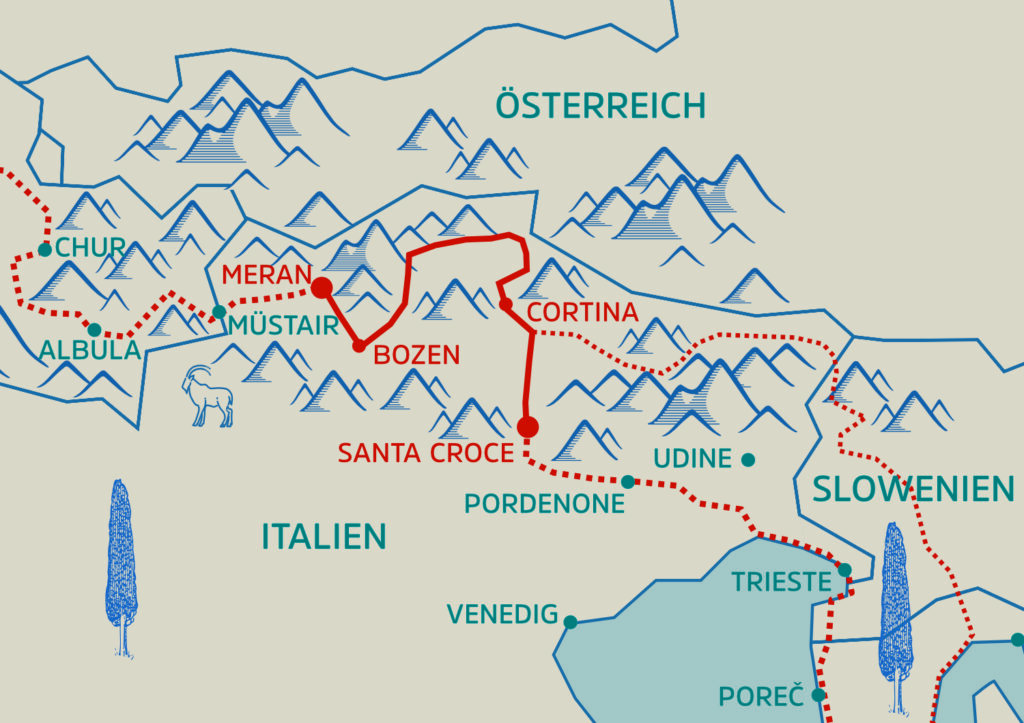

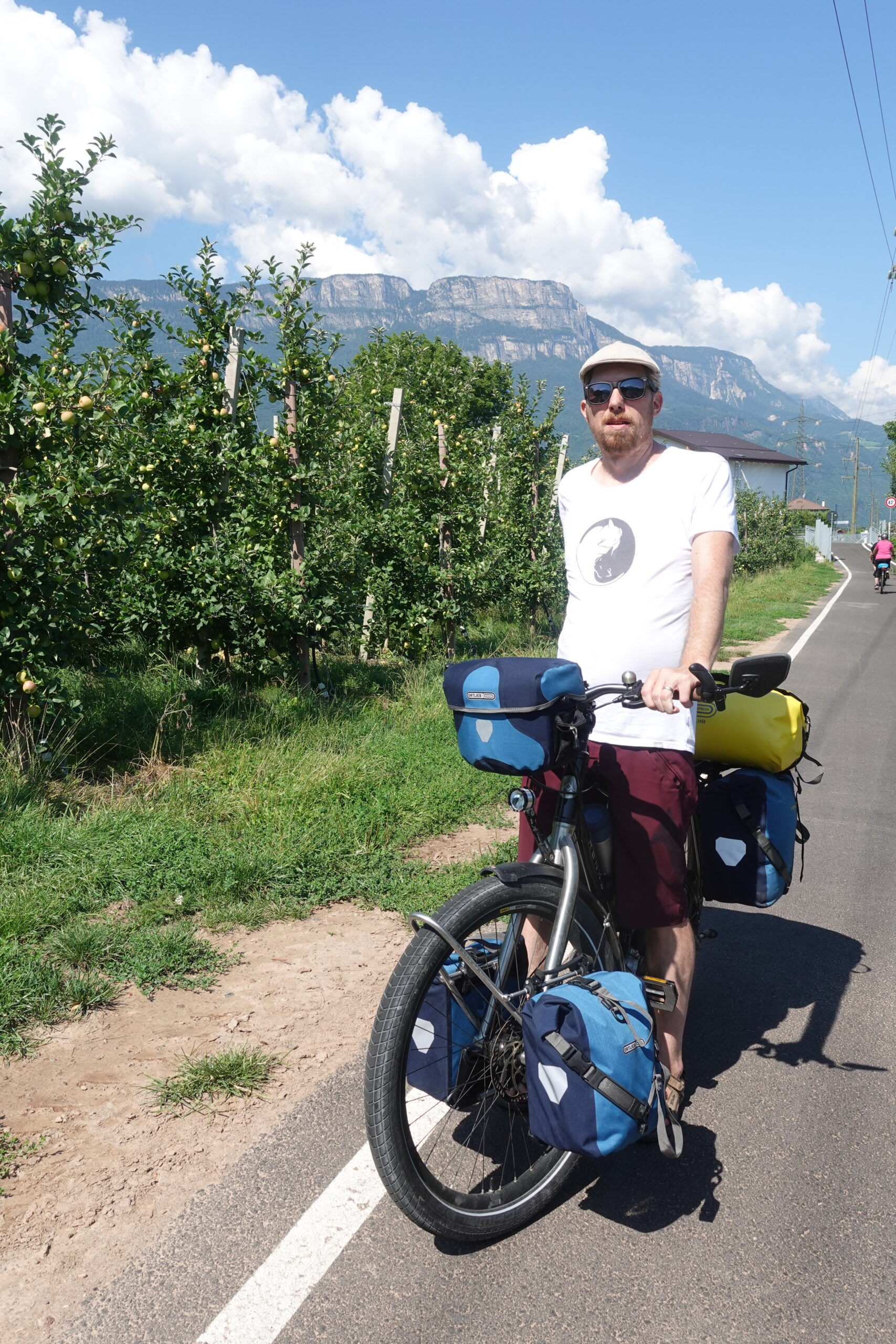

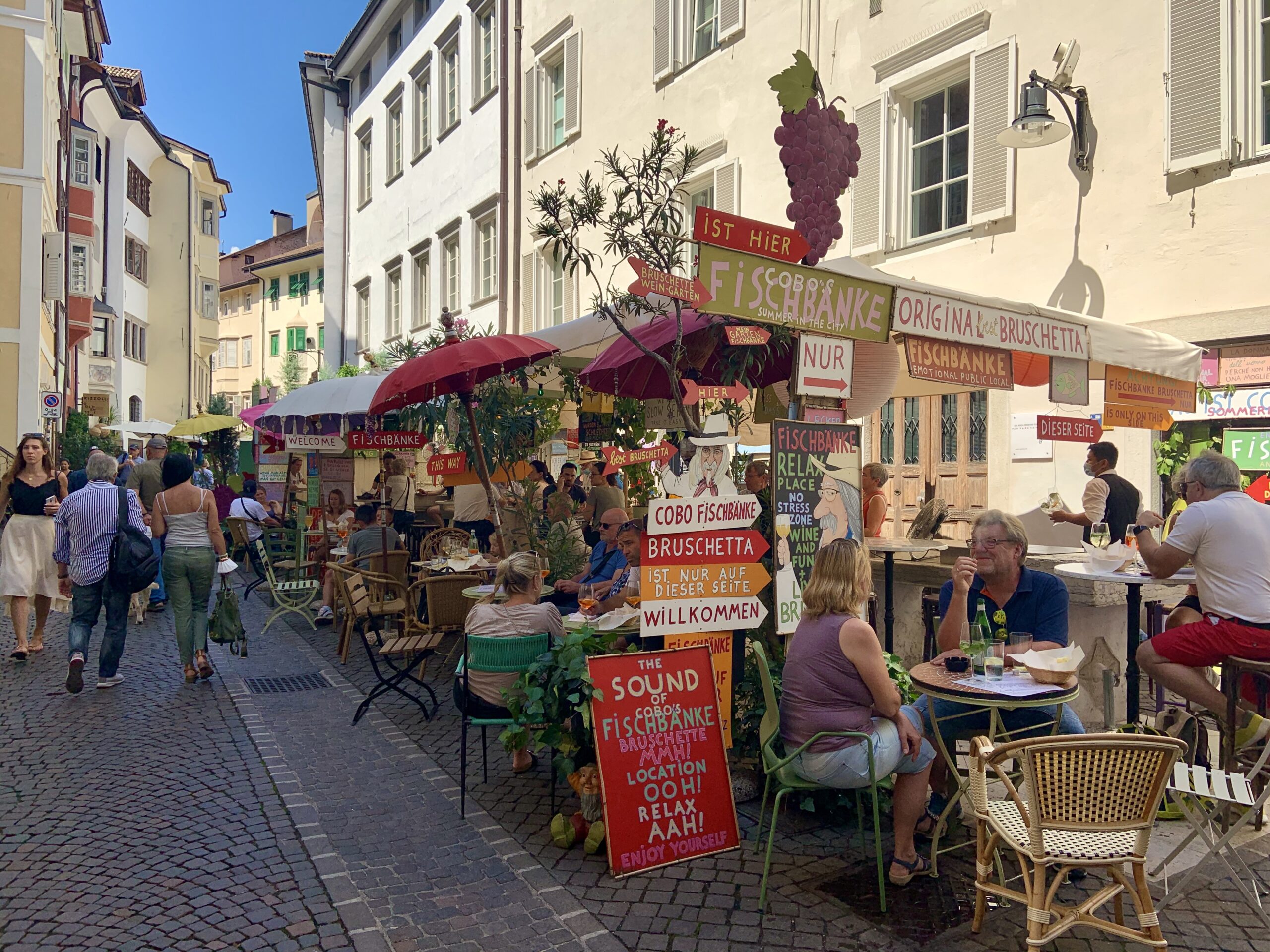
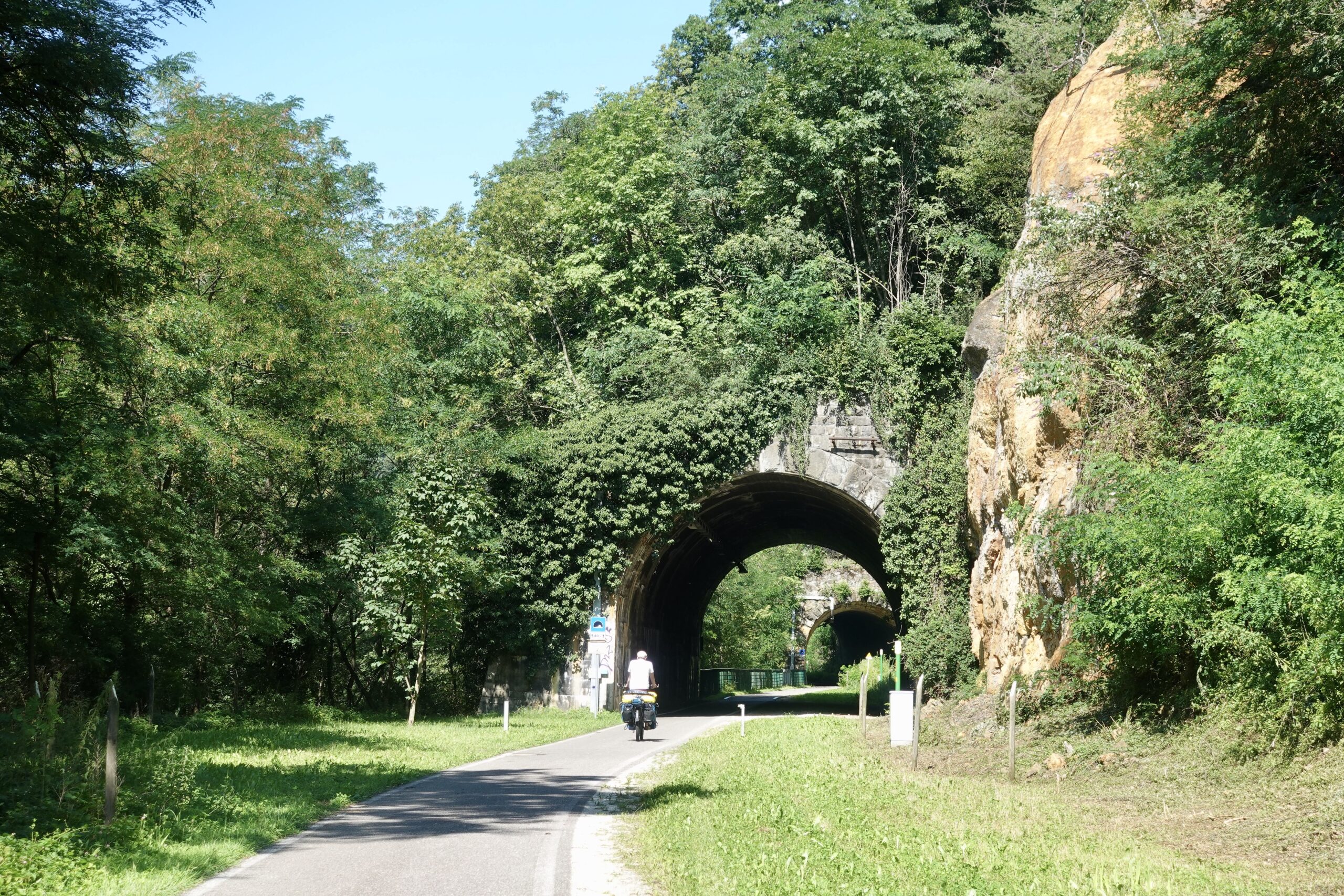


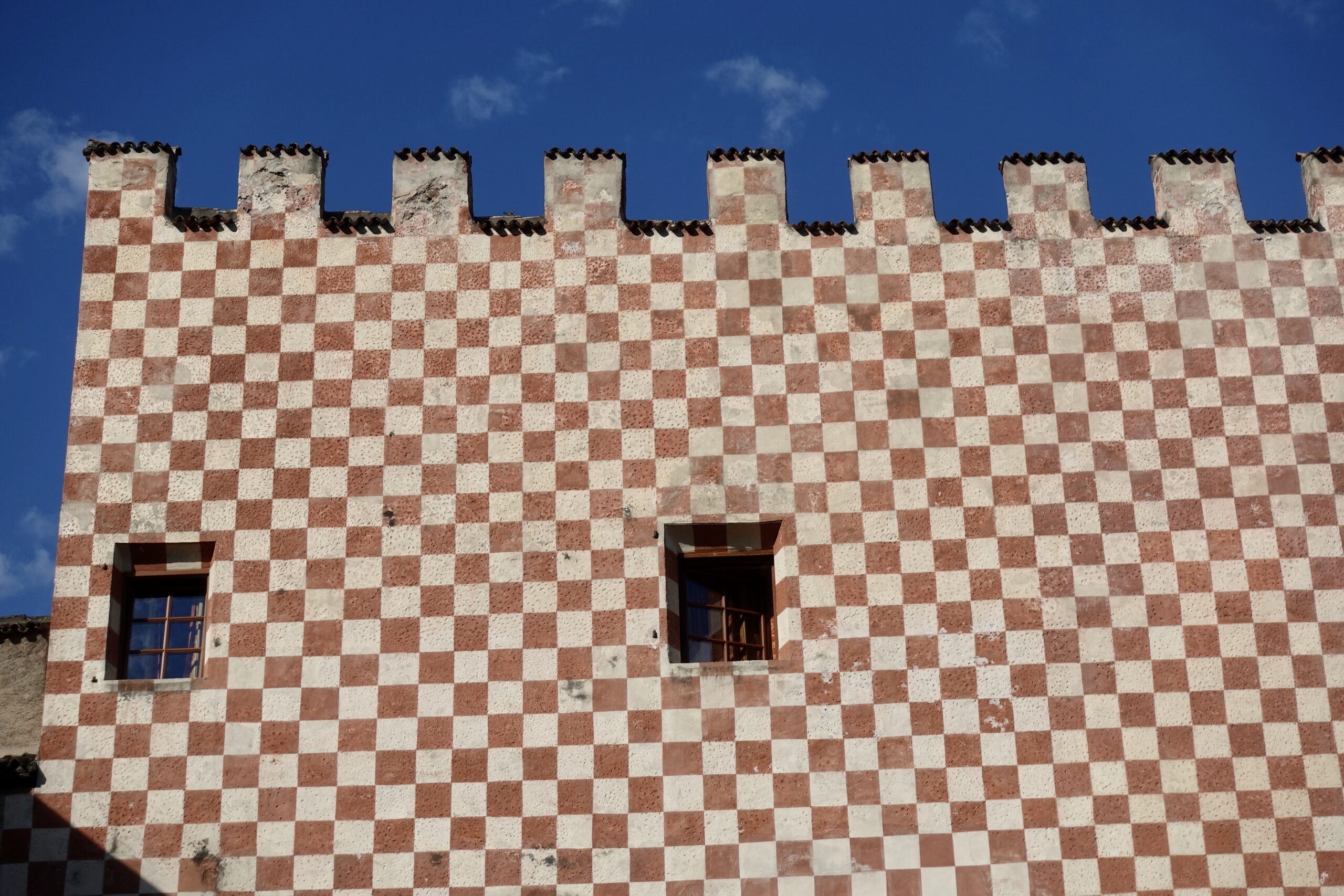

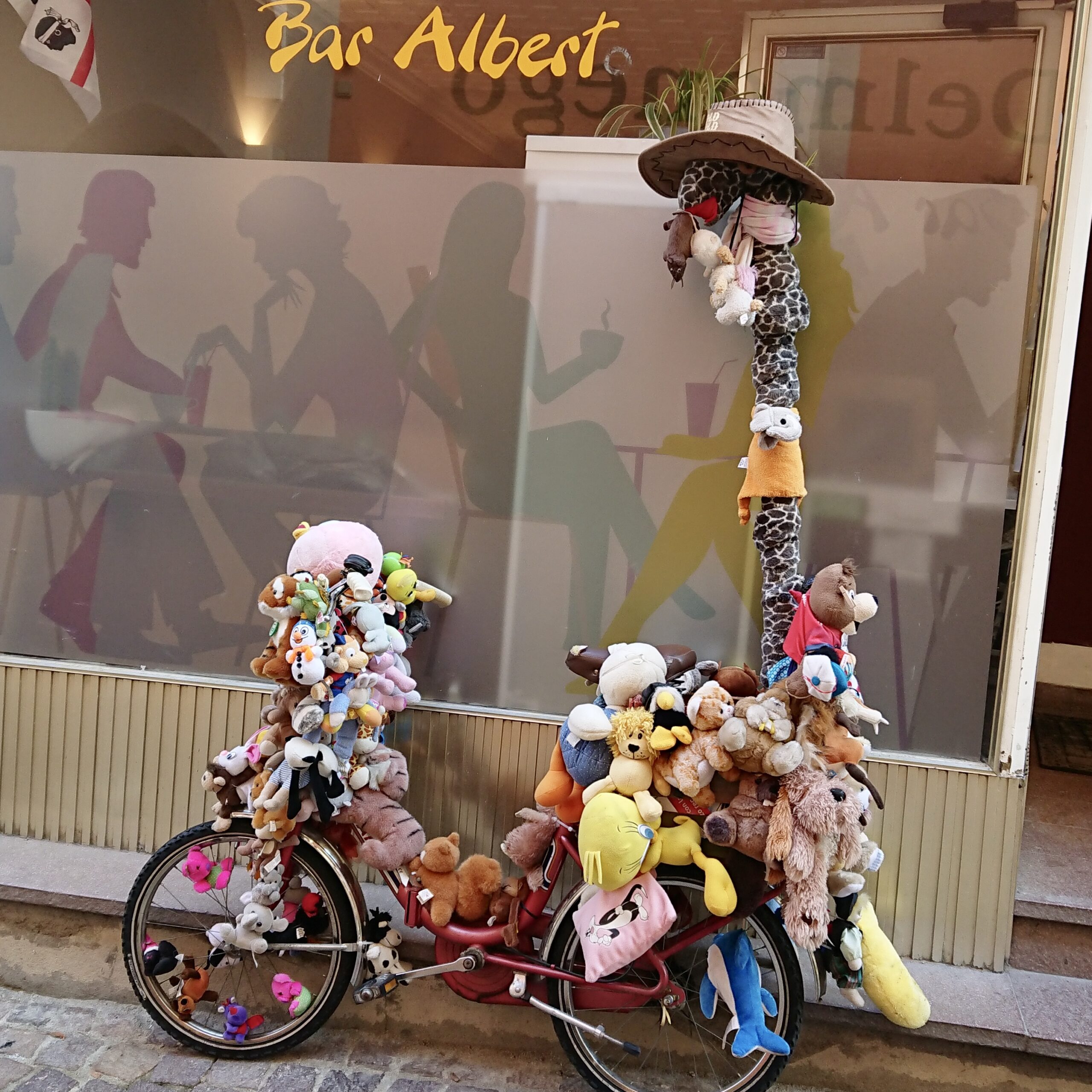

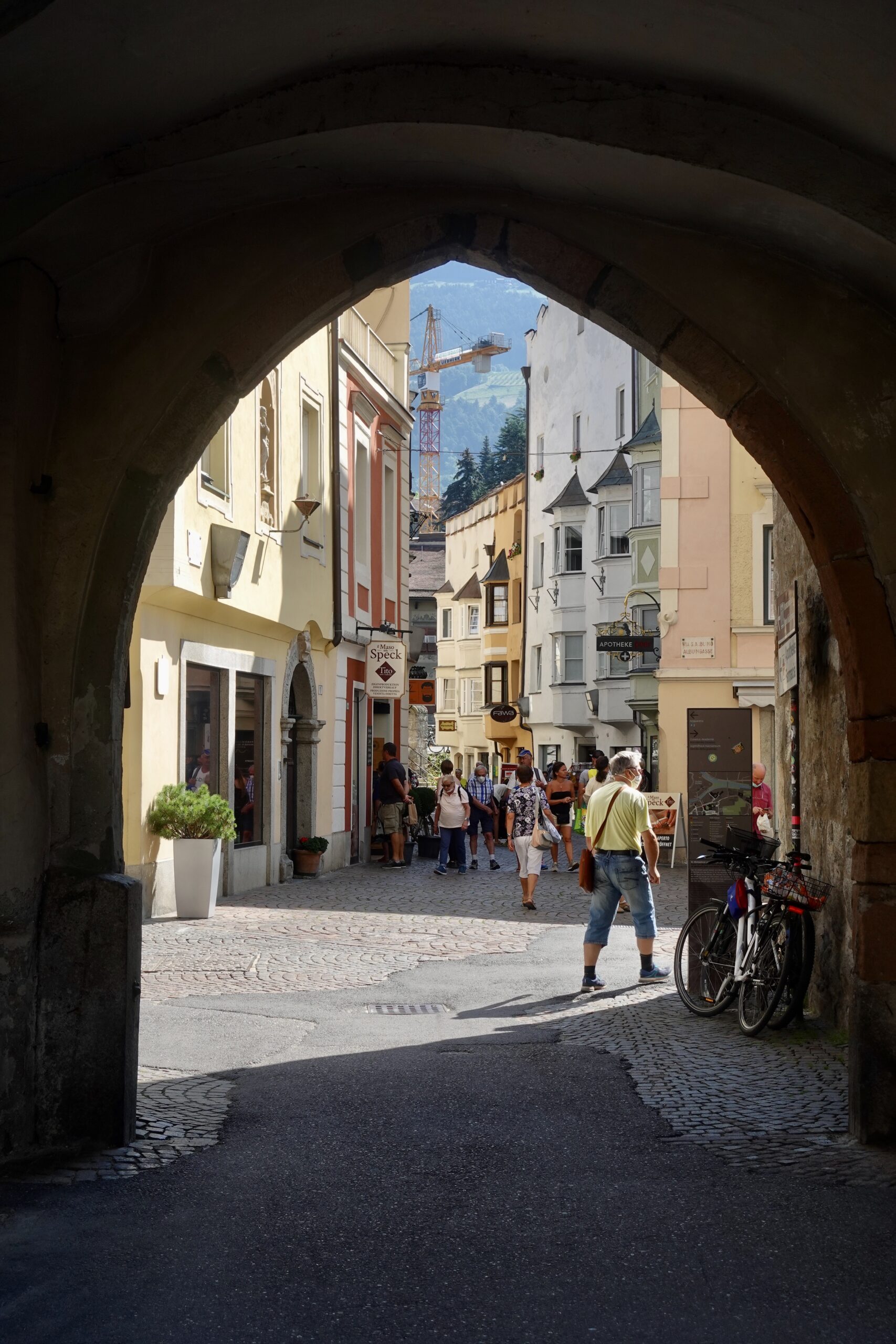


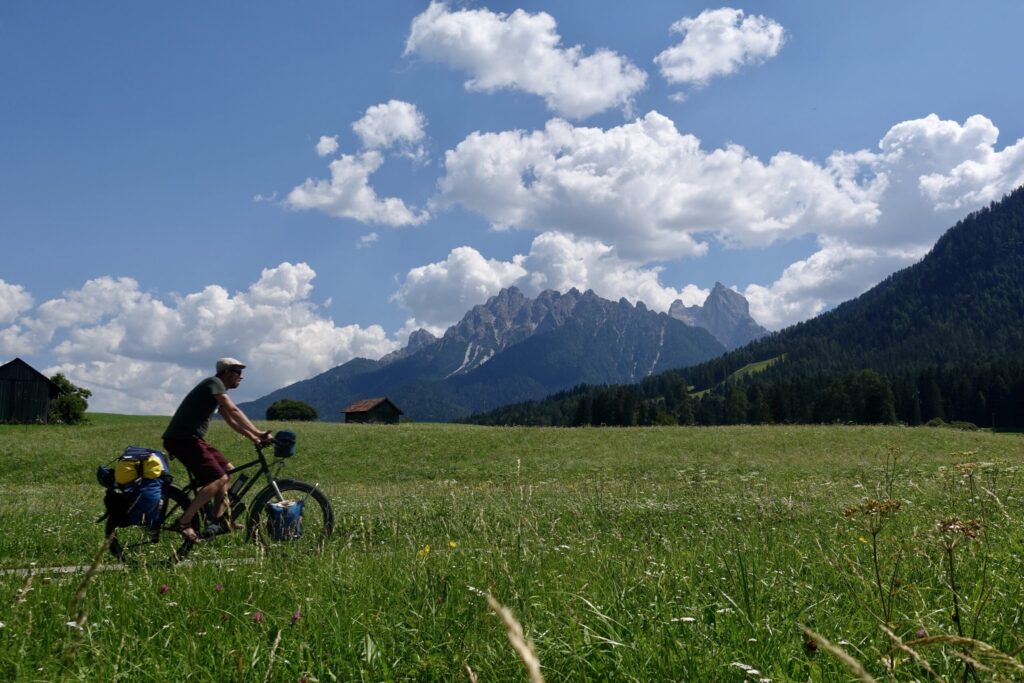
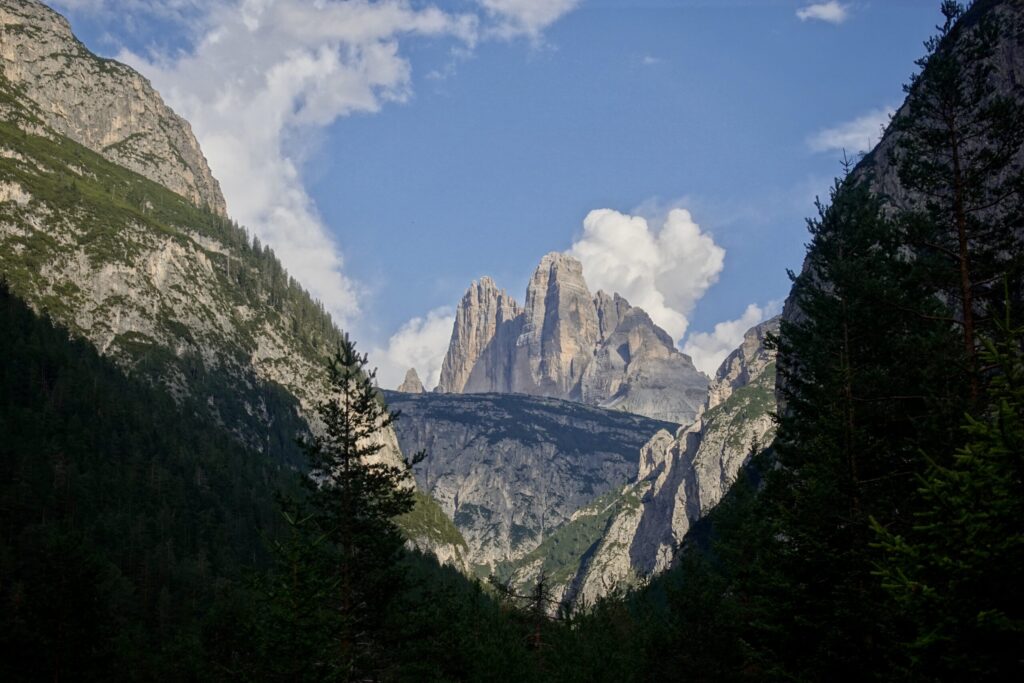

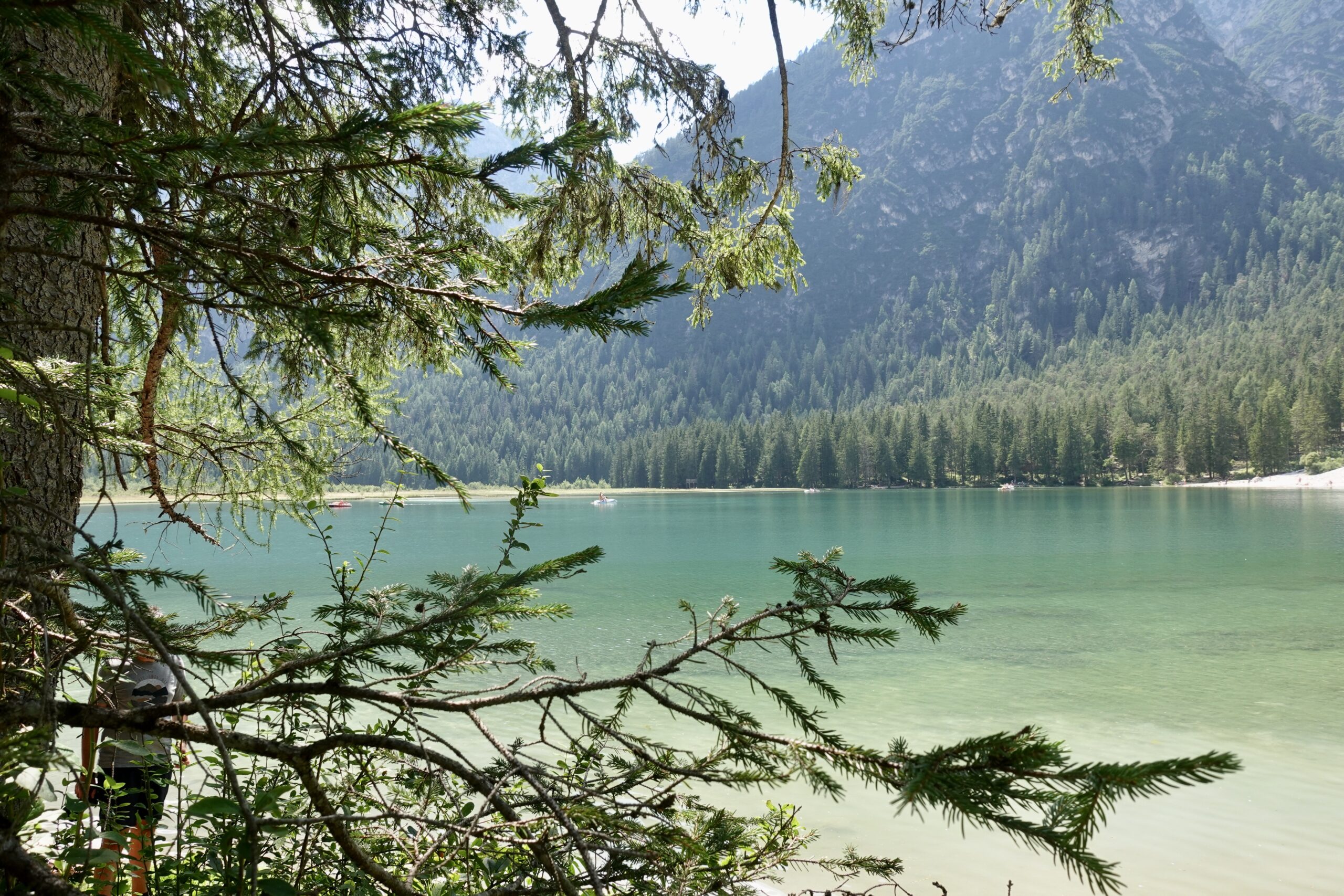
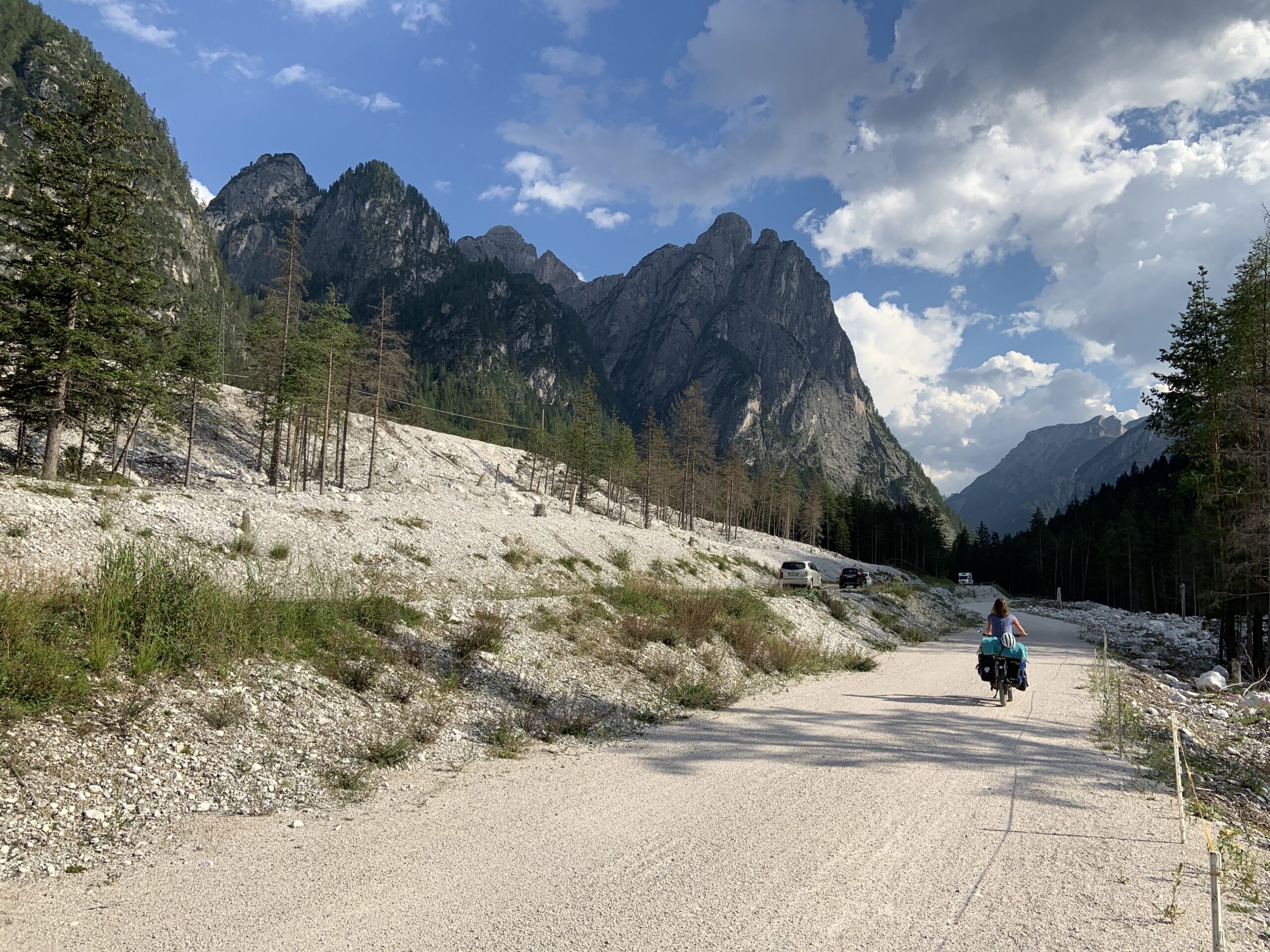
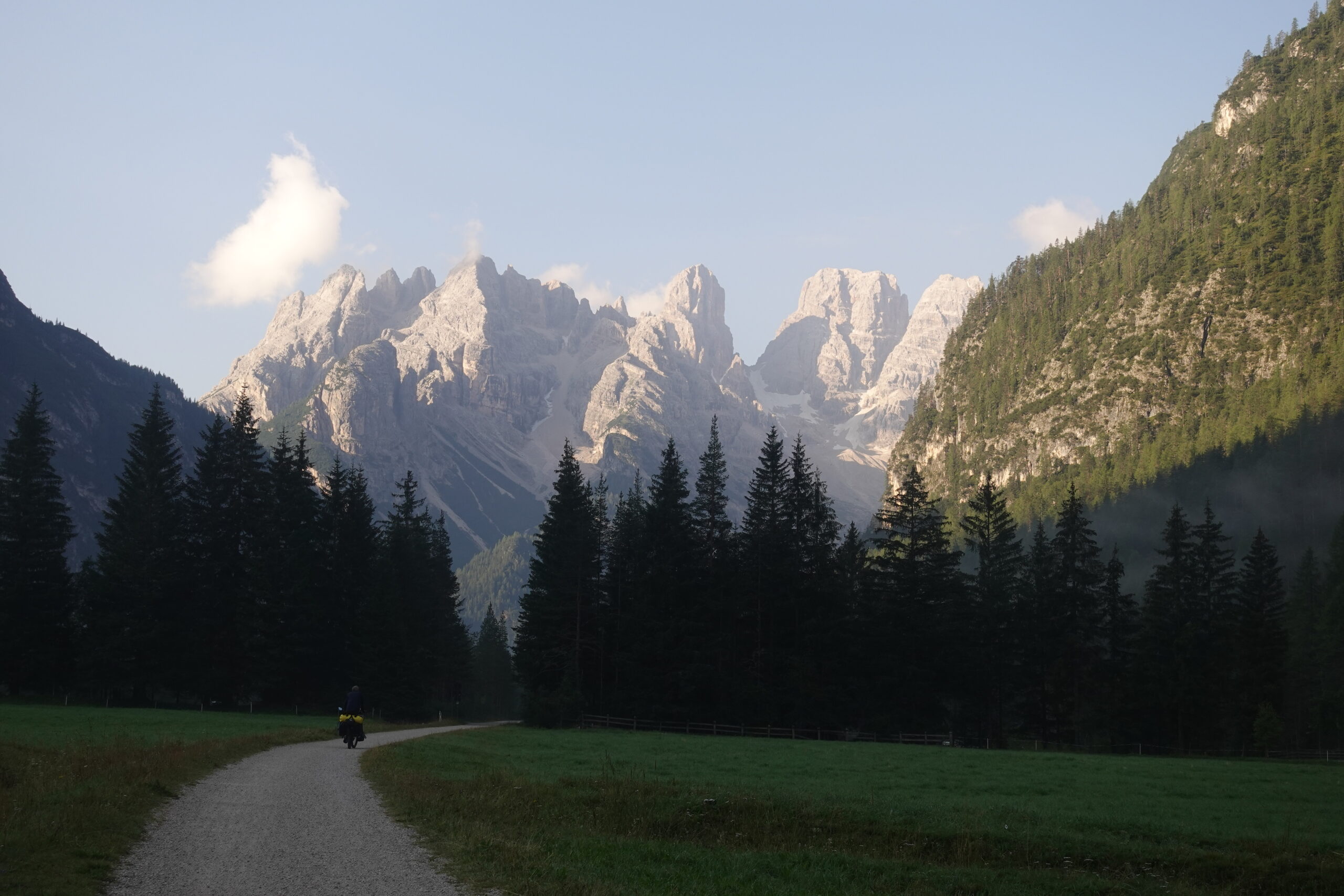
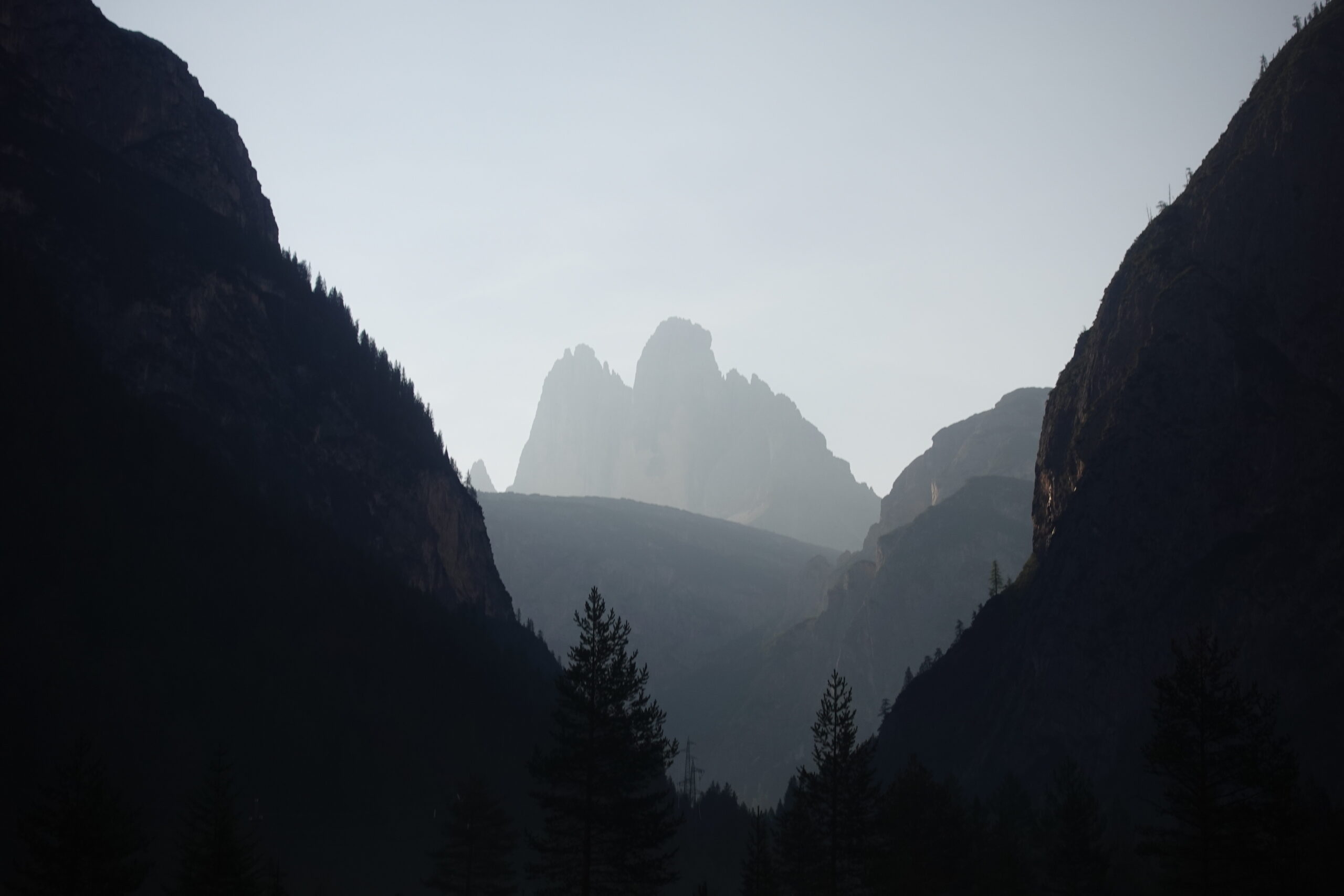
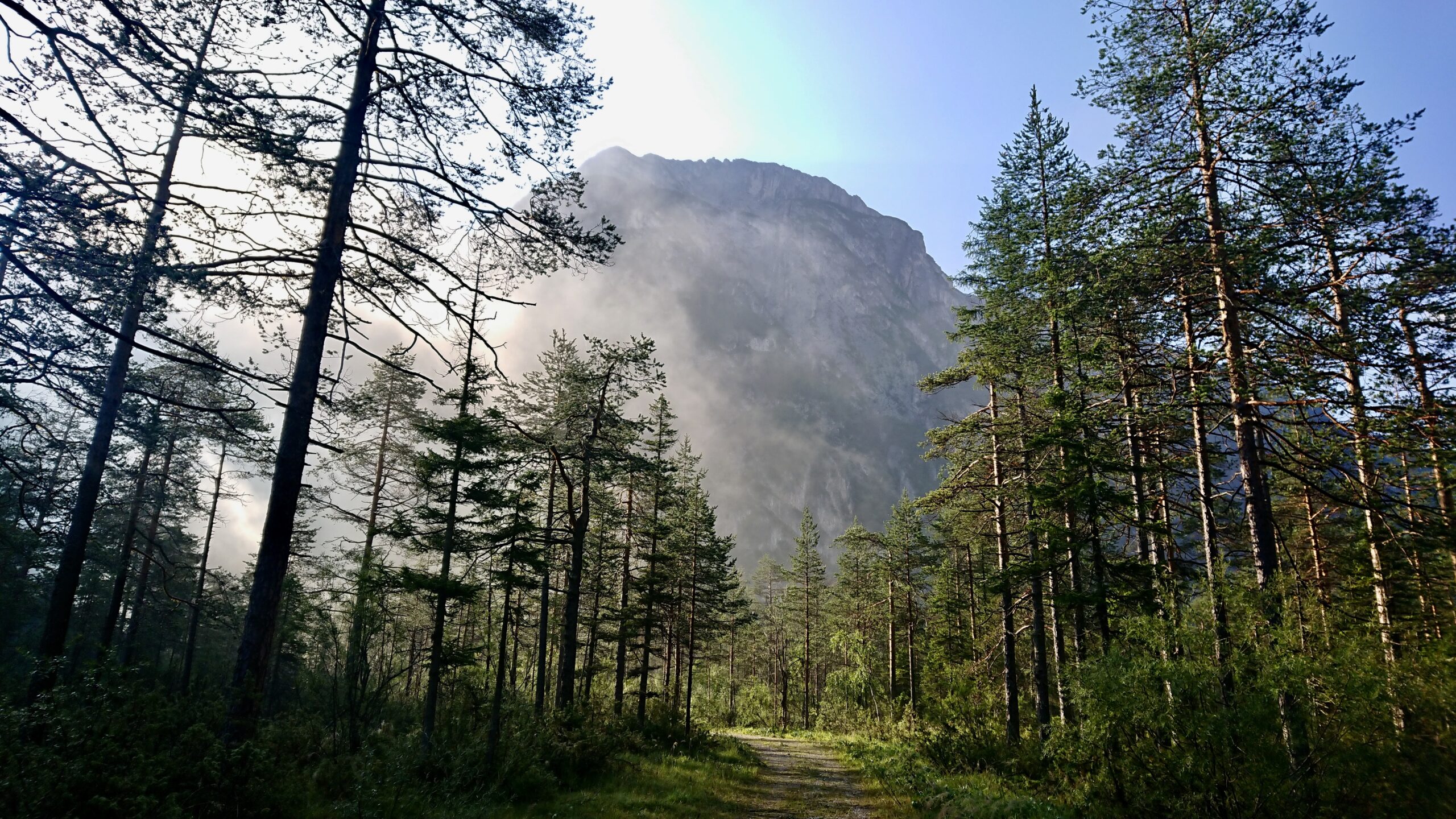
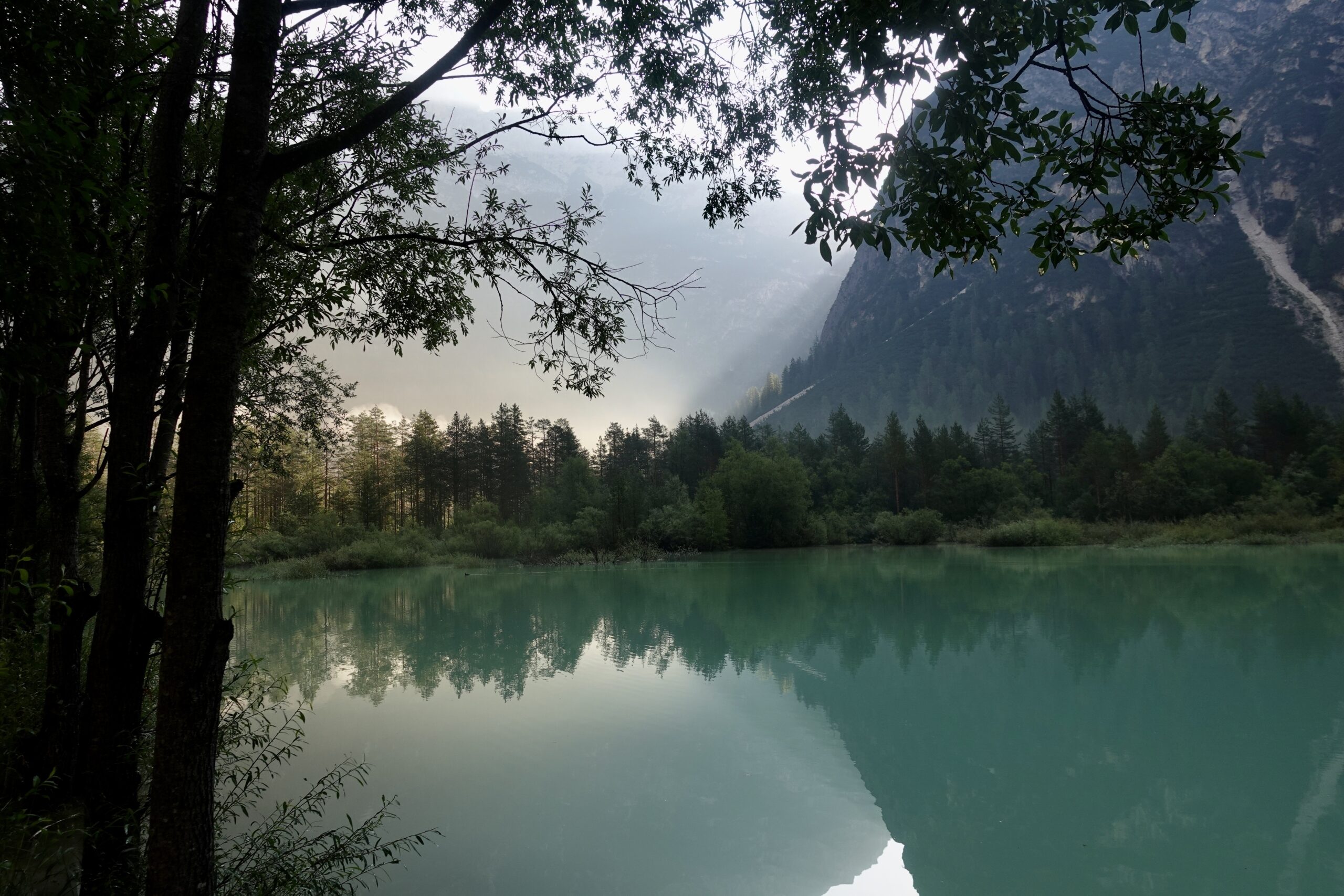
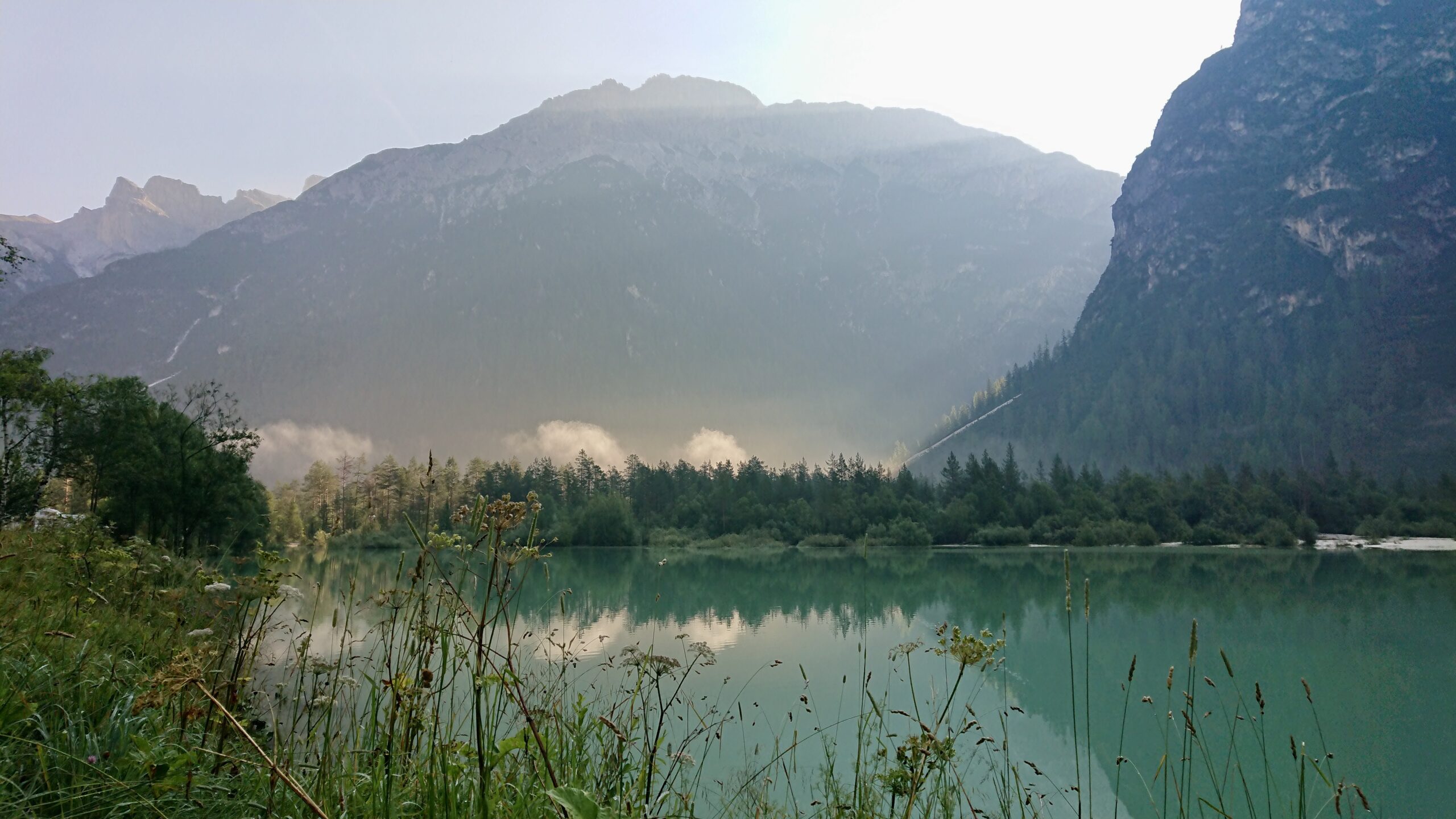
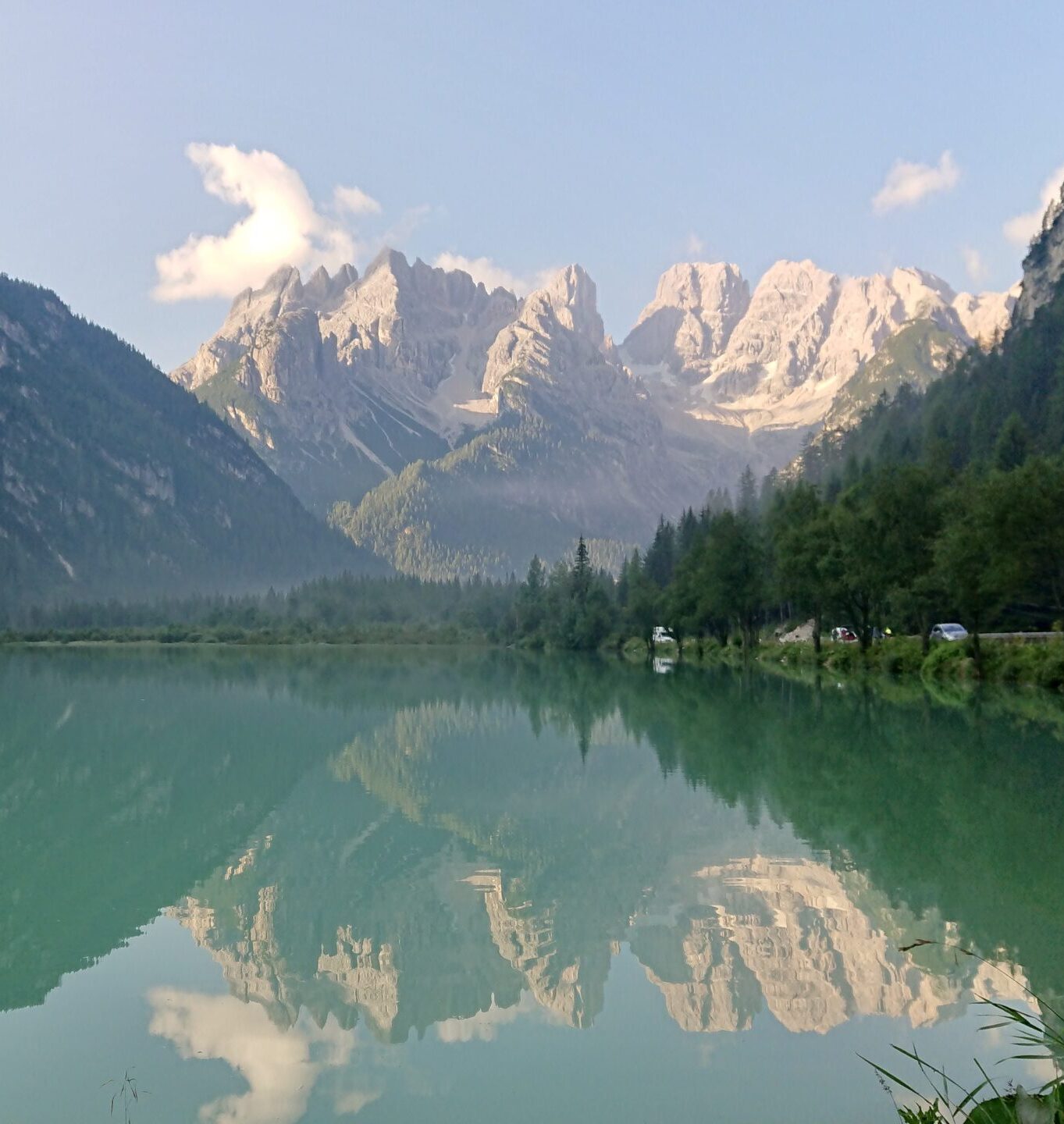

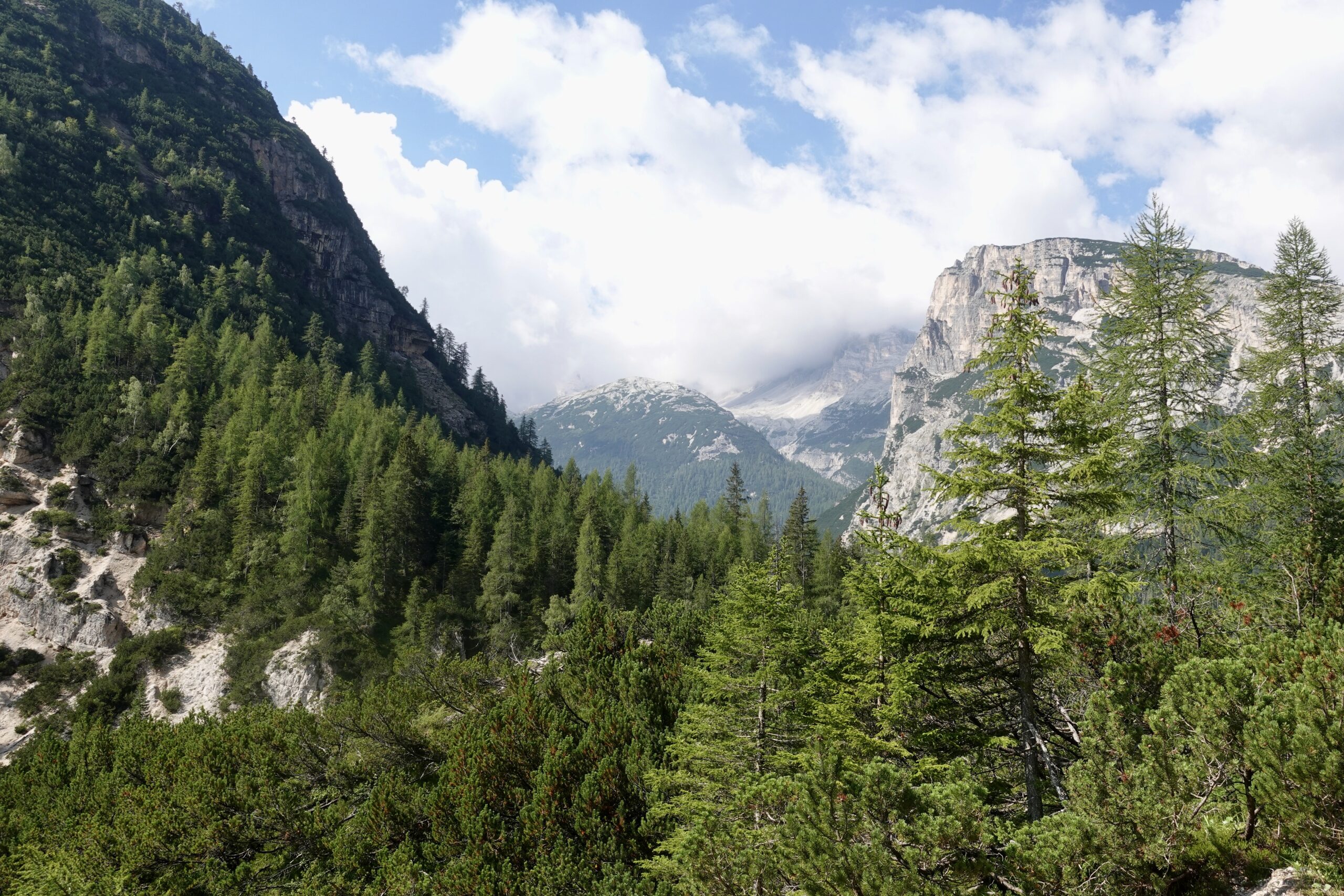
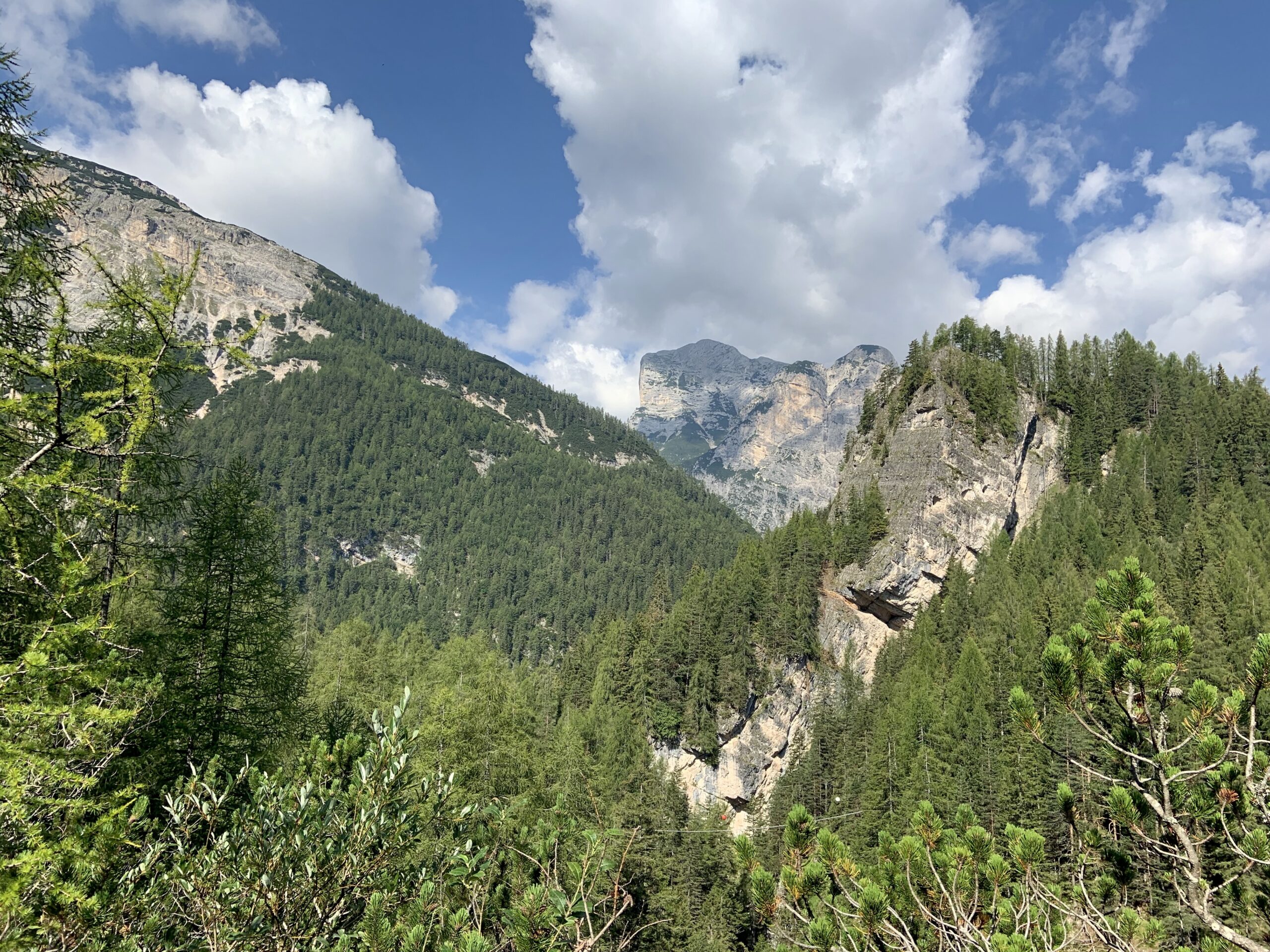


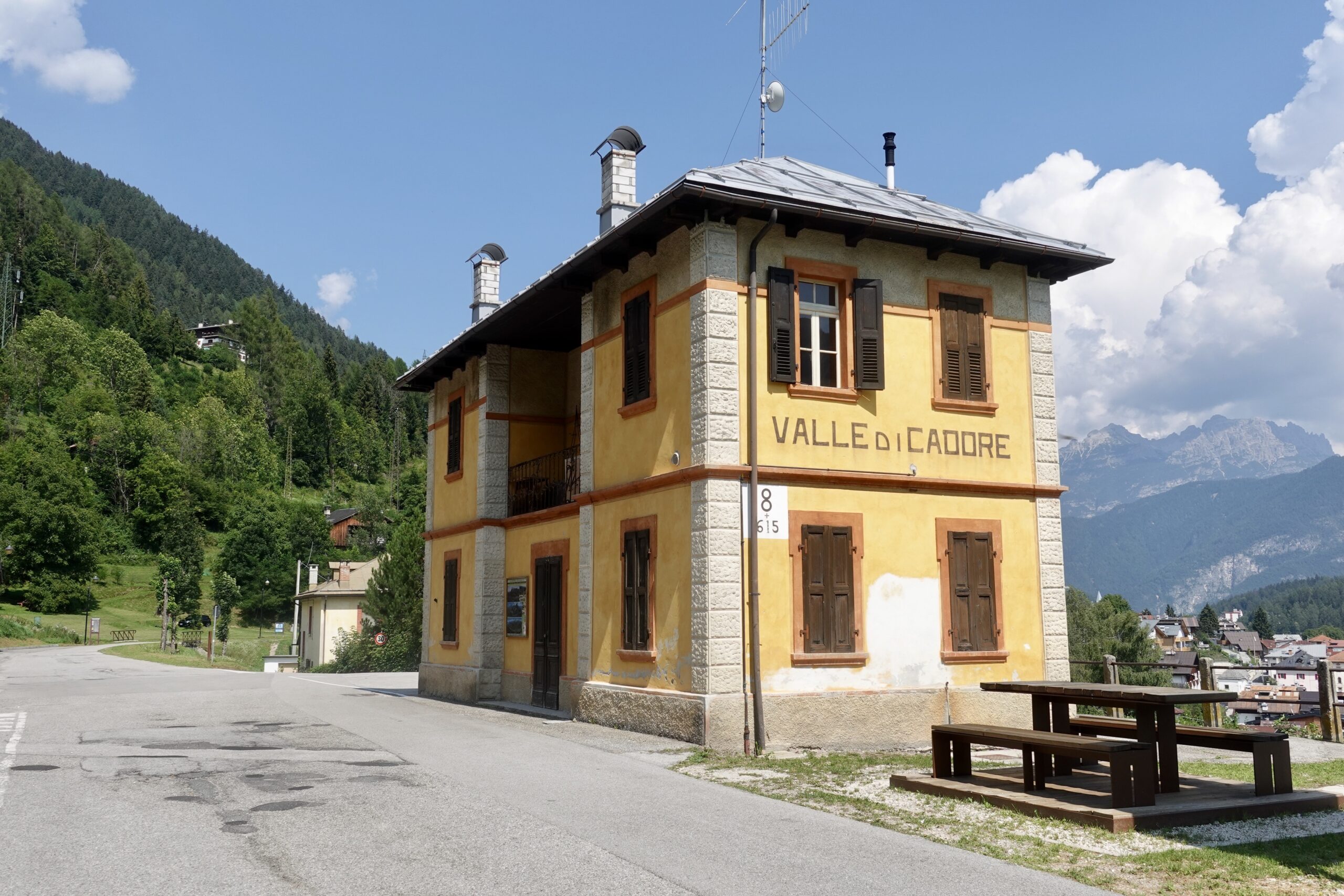
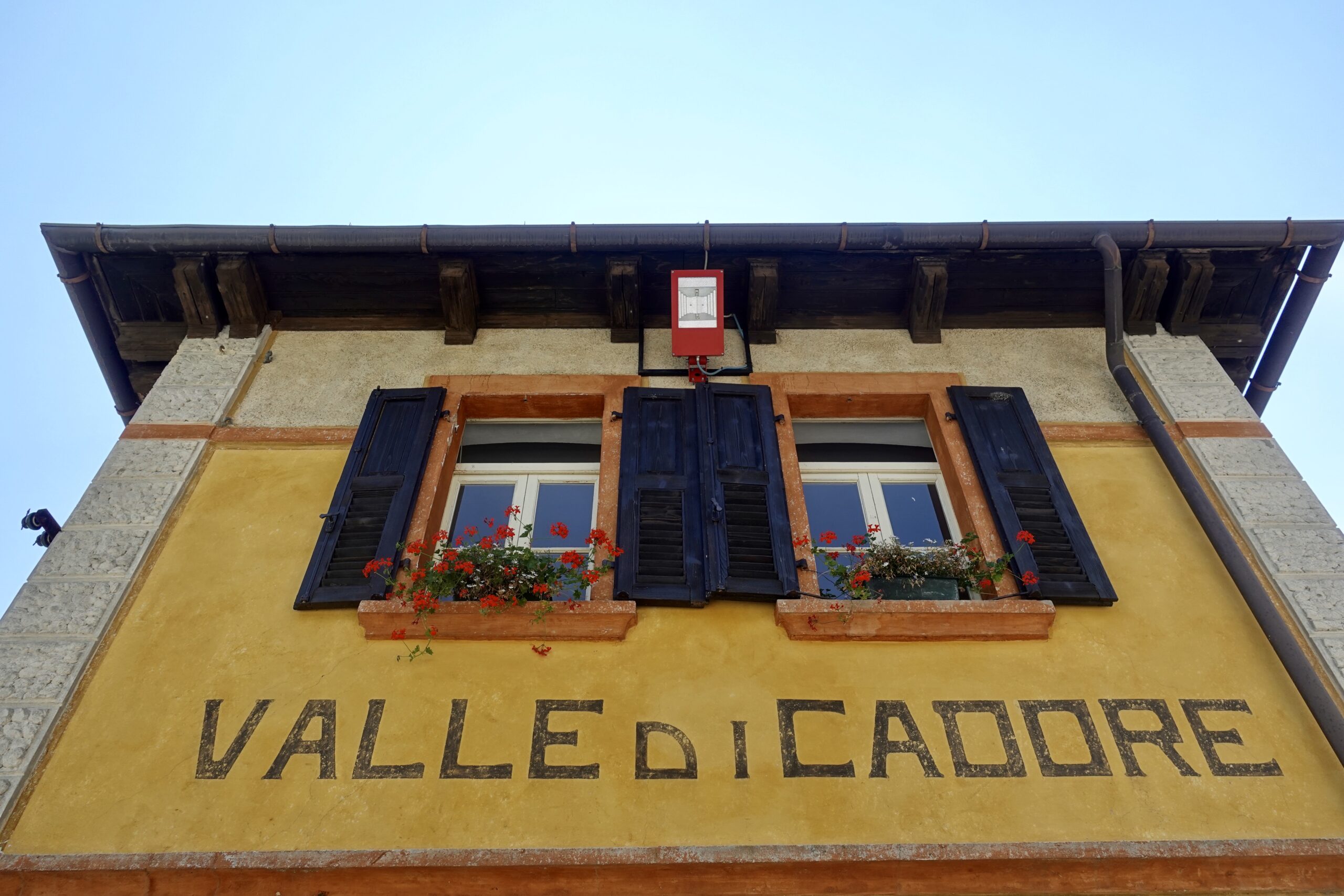
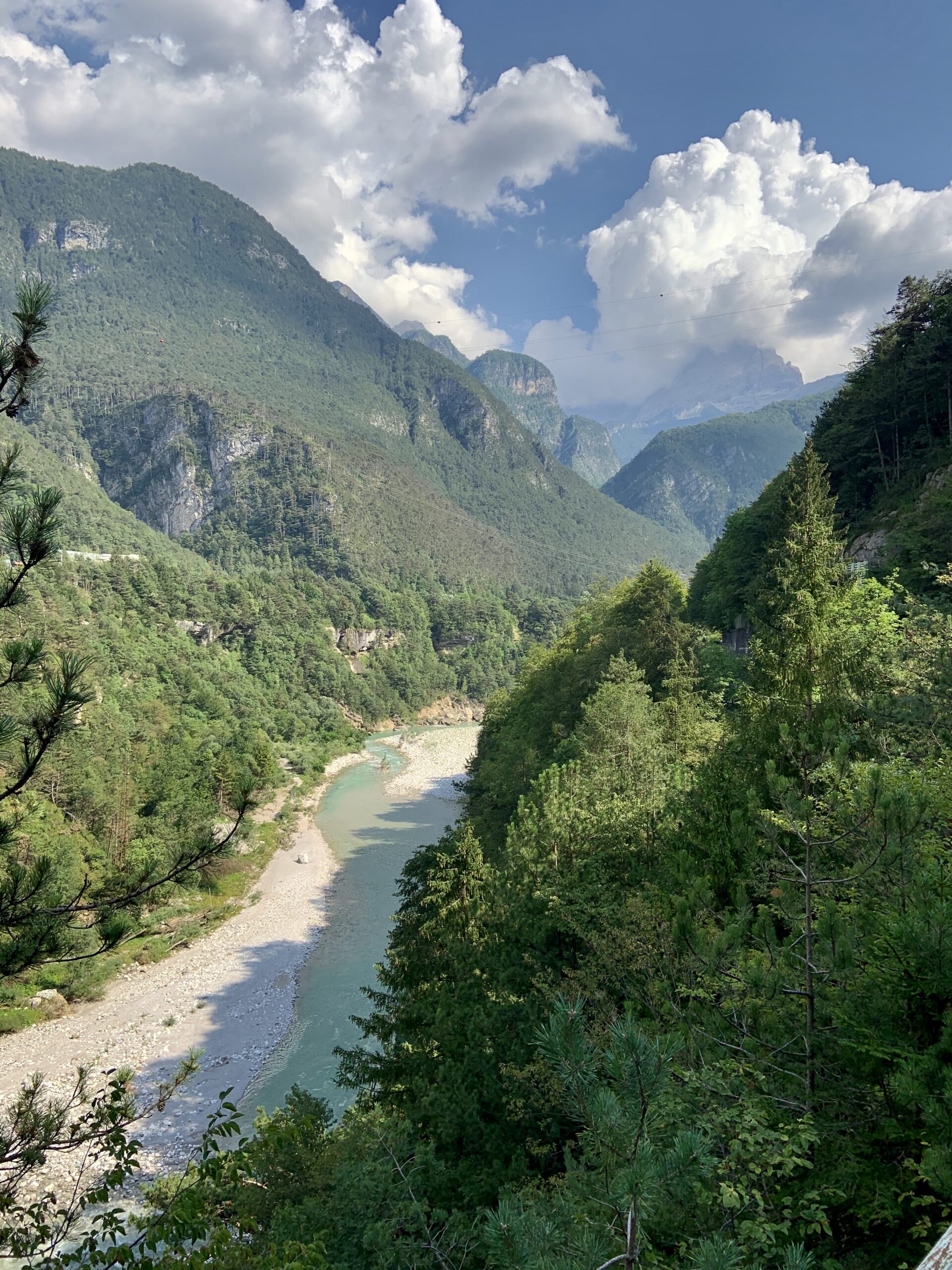

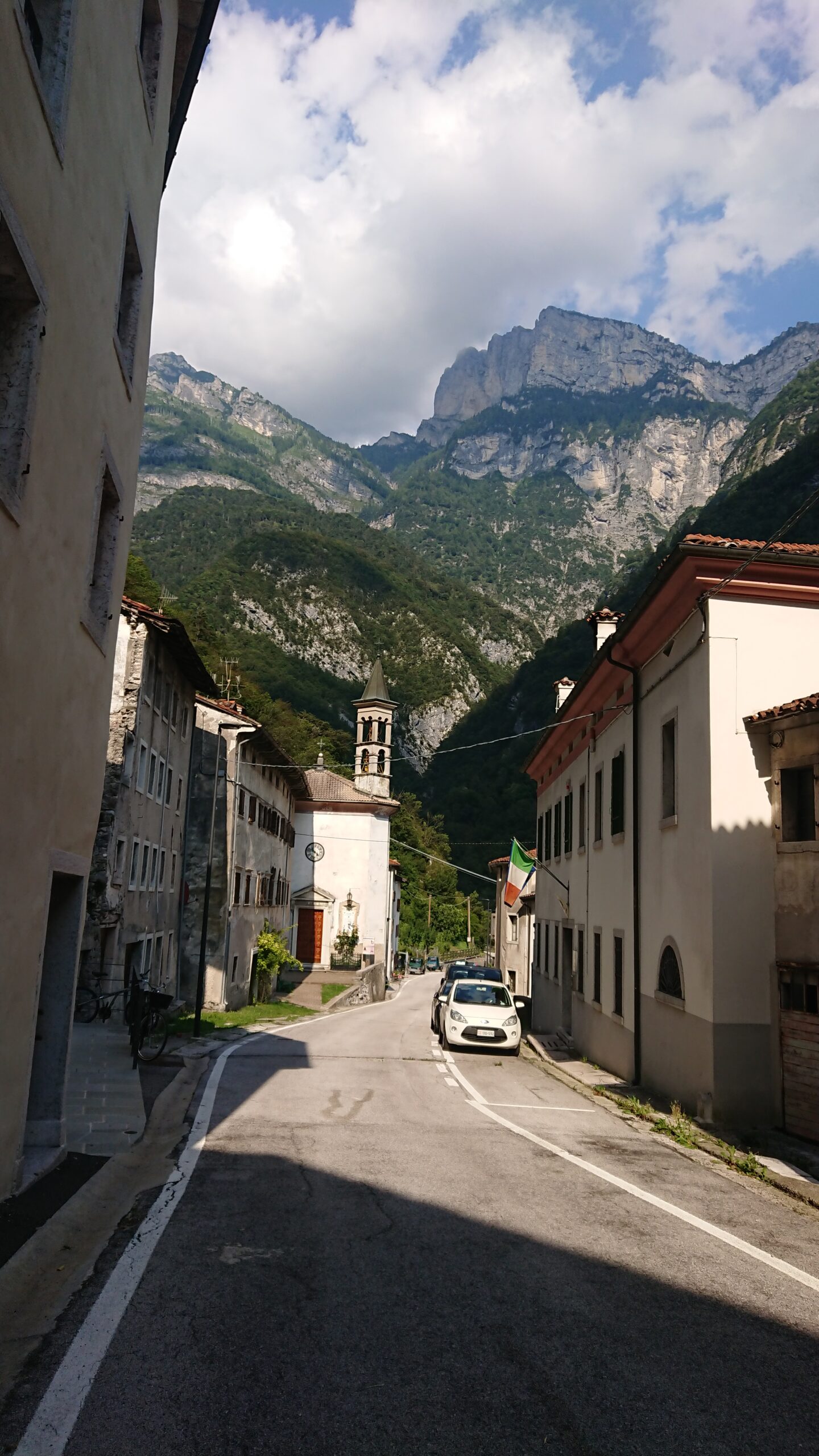
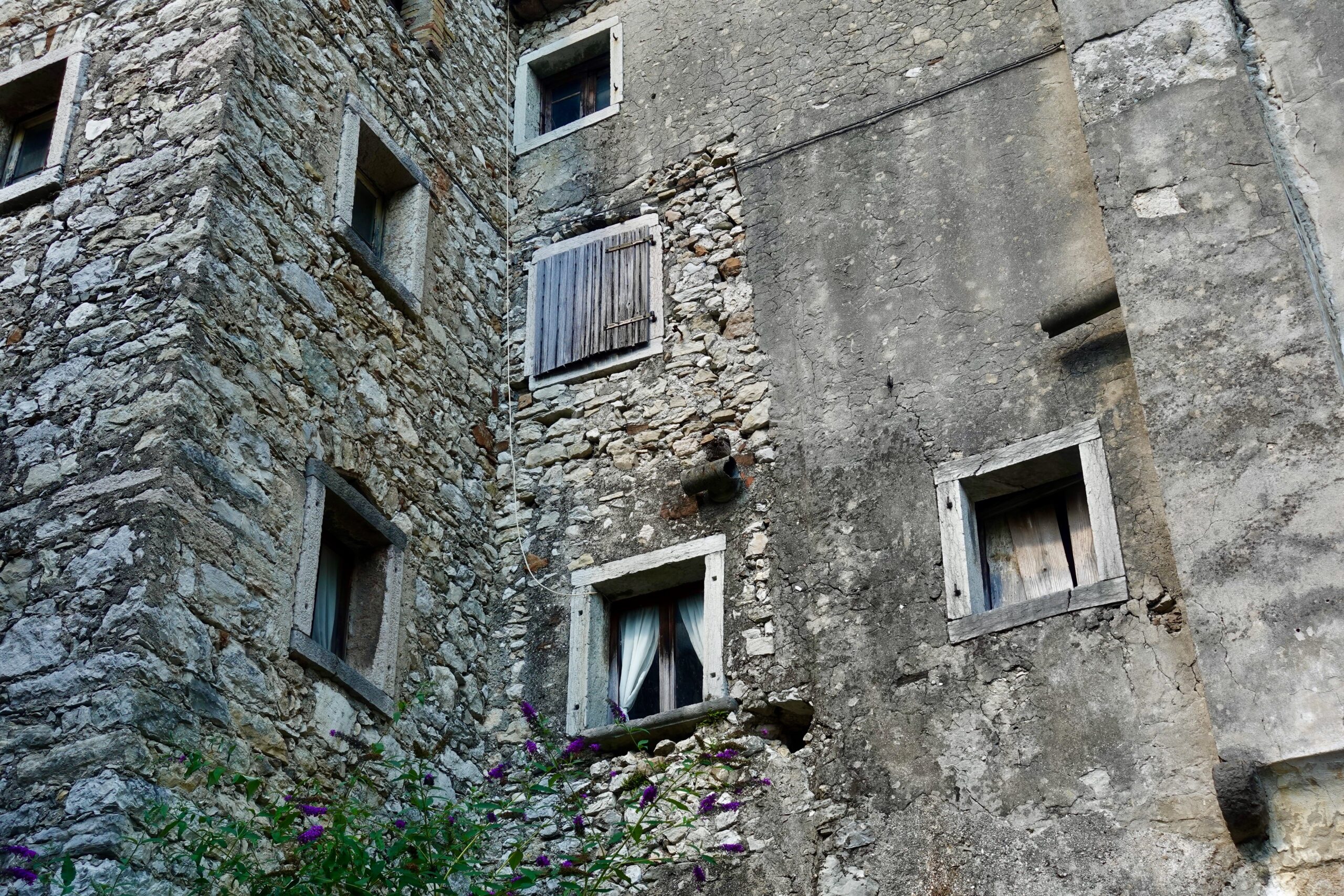

Leave a Reply